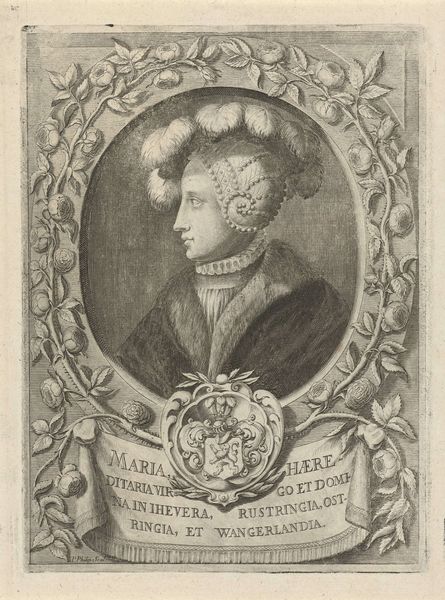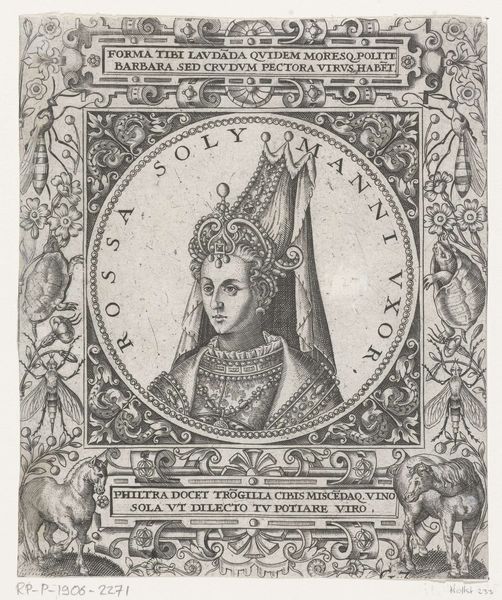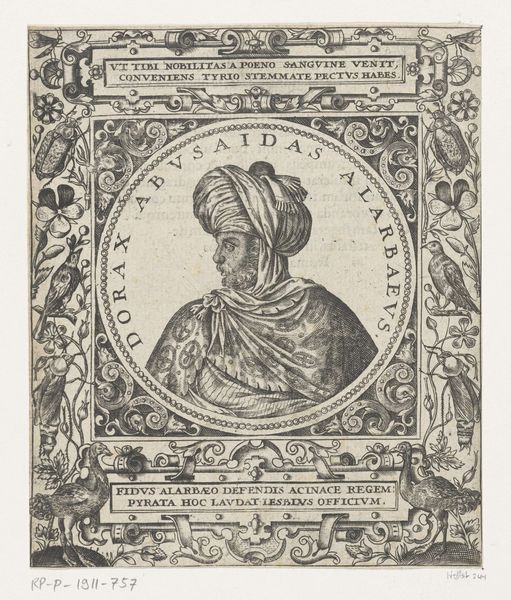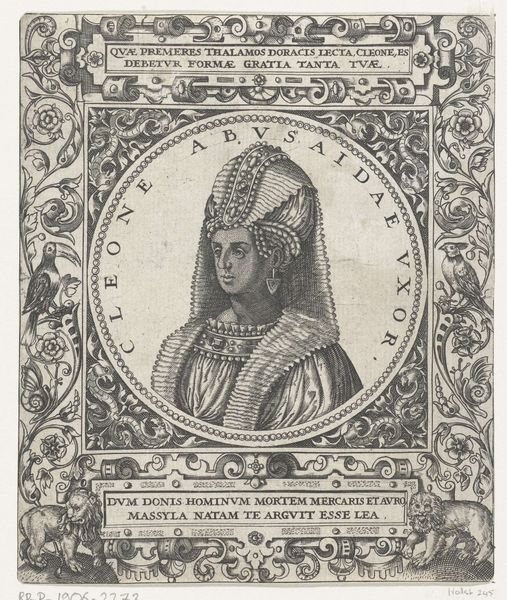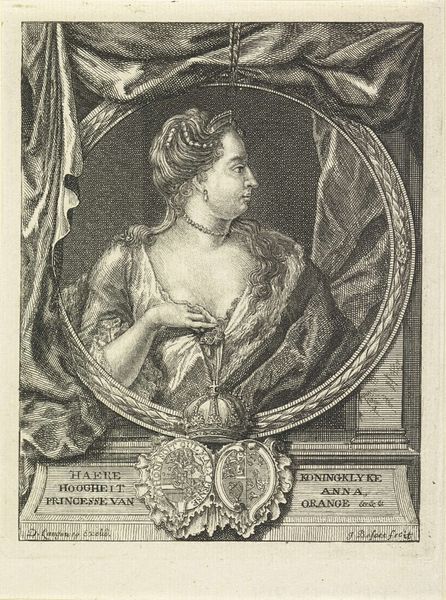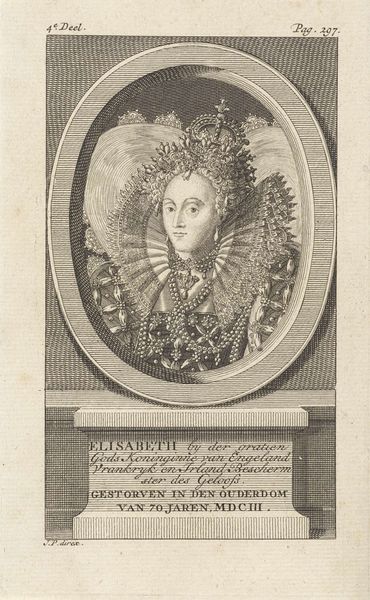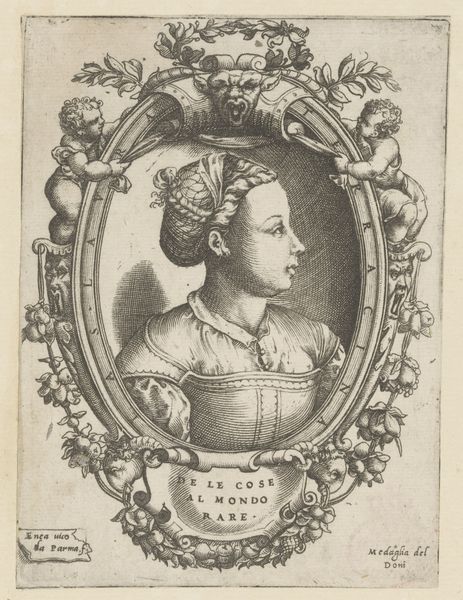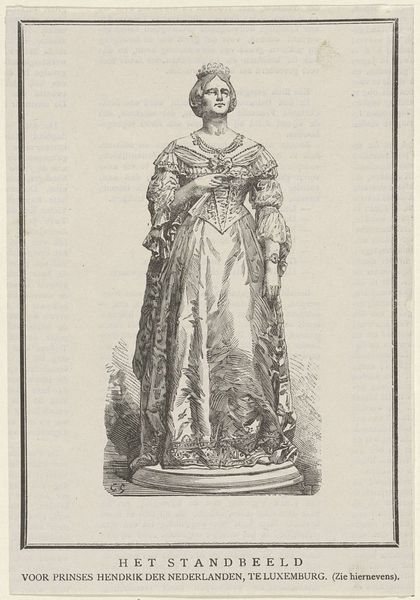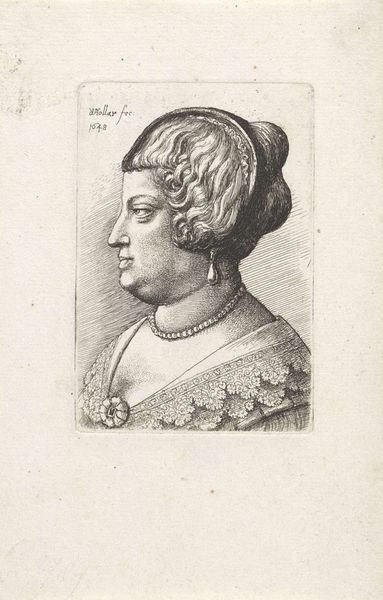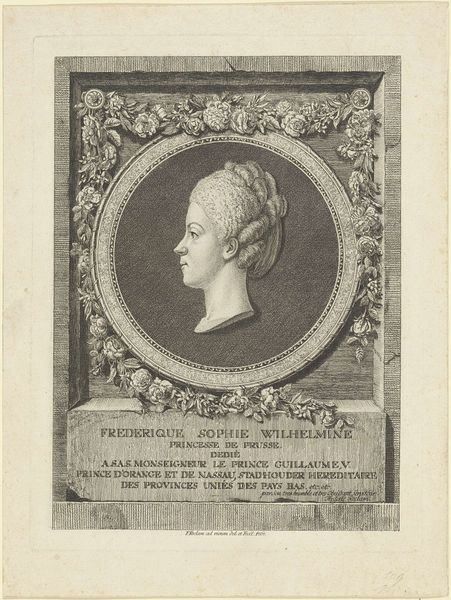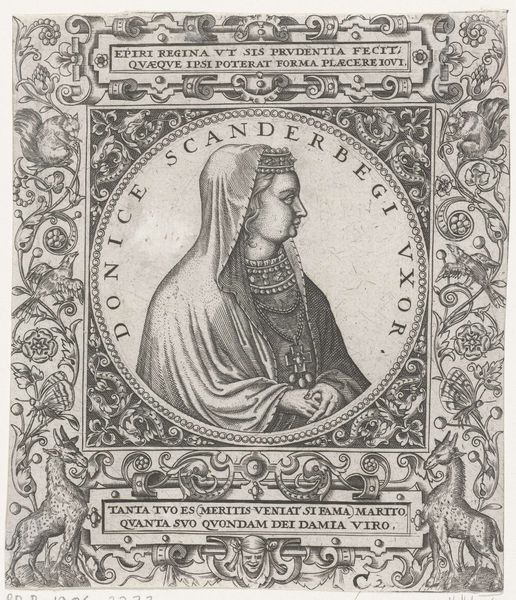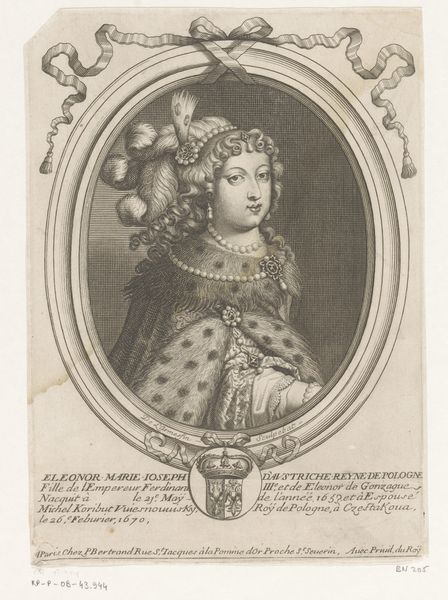
print, engraving
#
portrait
# print
#
11_renaissance
#
northern-renaissance
#
engraving
Dimensions: height 157 mm, width 125 mm
Copyright: Rijks Museum: Open Domain
Curator: At first glance, there's a serene formality to this piece. It almost feels like a cameo, a miniature stage setting. The portrait's encased within these ornamental frames, adorned with flowers and Latin text… intriguing. Editor: Indeed. This engraving, crafted by Theodor de Bry in 1596, is titled "Portret van de sultane Tamira," which translates to "Portrait of Sultana Tamira." It resides in the Rijksmuseum, and it offers us a glimpse into how European artists perceived figures from other cultures. Curator: I love that circular frame – it feels like a window, or perhaps a coin immortalizing her likeness. There's a certain theatricality to the presentation, yet the subject herself appears rather subdued. Did they actually know what she looked like, or is it conjecture? Editor: That's the crux of the matter, isn't it? The 'truth' of representation. Consider that this print, a product of the Northern Renaissance, would likely be consumed by a European audience with little direct access to Ottoman court life. It performs power, but perhaps also Orientalist fantasy, filtering an image through colonial perceptions and projections. Tamira's headdress and jewels might not accurately reflect her attire, but symbolize "otherness." Curator: You can almost feel the weight of the metal plate beneath the engraver’s tool, you know? Each delicate line, painstakingly carved, imbuing her face with a stillness that borders on the melancholic. Is it admiration? Objectification? I feel caught between those possibilities. Editor: Exactly. And while art history gives us De Bry, feminist theory forces us to confront what her gaze means within a patriarchal colonial context. Is she a figurehead stripped of agency or a powerful leader navigating complex political terrain? Her apparent stillness speaks volumes in that tension. The framing with Latin phrases suggests her as both exotic ("nomad") and virtuous ("Greek virgin"), another conflicting duality. Curator: I suppose these aren’t merely images, but negotiations between worlds… each mark and flourish telling a story of curiosity, conquest, and perhaps, a profound, mutual misunderstanding. Editor: A perfect summary. By questioning those visual narratives, we can decode how perceptions were manufactured and solidified centuries ago and see echoes in modern forms of representations today. It invites an endless, and important, dialogue.
Comments
No comments
Be the first to comment and join the conversation on the ultimate creative platform.
